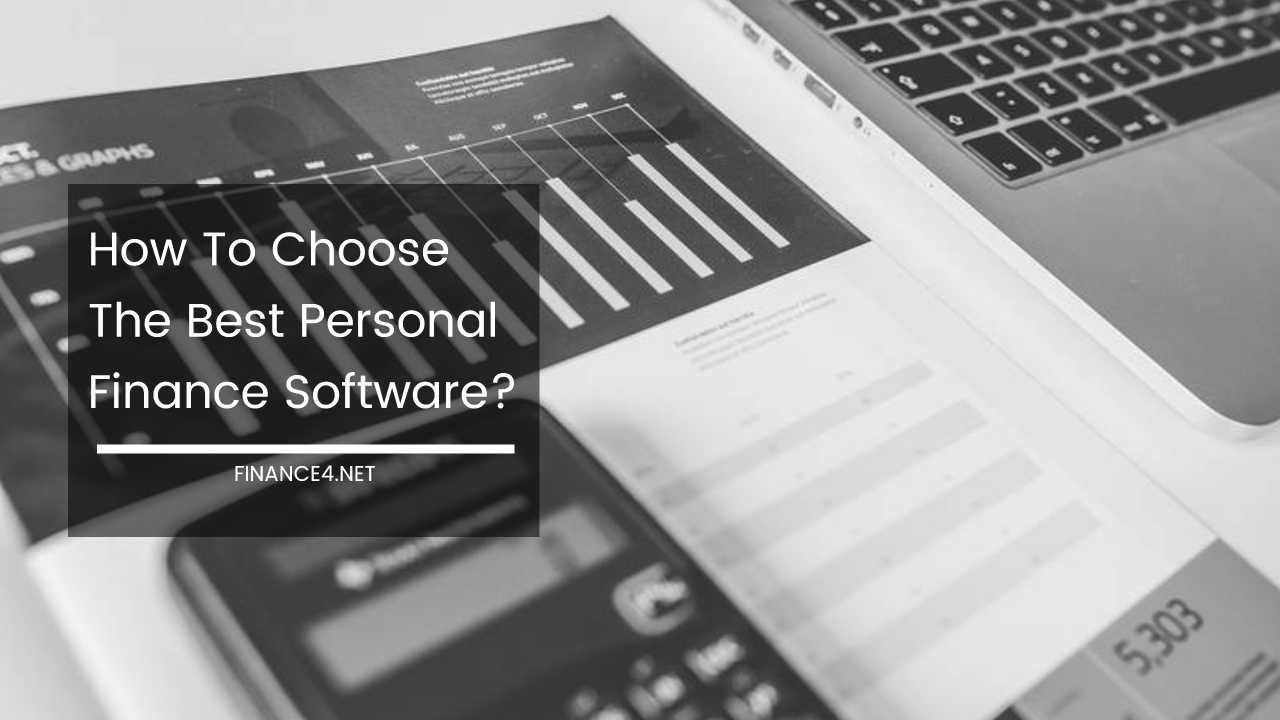How to Choose the Best Personal Finance Software?

How To Choose The Best Personal Finance Software: A Comprehensive Guide
In today’s digital age, managing personal finances has undergone a revolution. Gone are the days of manual calculations and paper spreadsheets.
Personal finance software offers a powerful toolkit to simplify budgeting, effortlessly track expenses, monitor investments, and gain valuable insights into your financial health.
However, navigating the vast array of options available in the market can be overwhelming. This comprehensive guide empowers you to make an informed decision by outlining key factors to consider when selecting the best personal finance software for your unique needs.
1. Define Your Financial Roadmap: Charting Your Course
Before embarking on your journey with personal finance software, it’s crucial to establish your financial goals.
Whether you aspire to retire comfortably, pay off lingering debt, save for a dream vacation, or build a robust emergency fund, clearly defining these objectives will serve as a compass, guiding you towards software features that directly address your aspirations.
Take time to create a roadmap by outlining your short-term (e.g., saving for a down payment on a car) and long-term (e.g., retirement planning) financial goals. This roadmap will be instrumental in evaluating the functionalities offered by different software programs.
2. Budgeting Needs: Tailoring the Software to Your Spending Habits
Budgeting is the cornerstone of effective personal finance management. When evaluating software options, prioritize robust budgeting features that align with your preferences.
Consider whether you favor manual entry of transactions or prefer the convenience of automatic syncing with your bank accounts and credit cards. Look for software that allows you to:
- Categorize expenses meticulously: This feature helps you understand where your money is going and identify areas for potential savings.
- Offer customizable budgeting templates: Pre-designed templates for common budgeting methods (e.g., 50/30/20 rule, zero-based budgeting) can provide a starting point, while customizable options allow you to tailor the approach to your specific needs.
- Provide real-time tracking: Stay informed about your spending habits with up-to-date dashboards and progress reports. Look for software that allows you to set spending limits for different categories and receive alerts when you approach or exceed those limits.
3. Accessibility Across Devices: Ensuring Seamless Integration
In today’s mobile world, seamless accessibility is paramount. Ensure the personal finance software you choose is compatible with the devices you use most frequently – desktops, laptops, smartphones, or tablets.
Opt for software that offers synchronization across multiple platforms, allowing you to effortlessly update your financial data regardless of the device you’re using.
Cloud-based solutions are ideal, providing the flexibility to access your financial information anytime, anywhere, with just an internet connection.
Consider software that also offers mobile apps with intuitive interfaces for on-the-go expense tracking and budgeting adjustments.
4. Prioritizing Security: Protecting Your Financial Fortress
Protecting your sensitive financial data should be a top priority when selecting personal finance software. Choose software that employs robust security measures to safeguard your financial fortress. Look for features like:
- Encryption: This scrambles your data, making it unreadable in case of a breach.
- Multi-factor authentication: This adds an extra layer of security by requiring a second verification step beyond your password, such as a fingerprint scan or a code sent to your phone.
- Regular data backups: Ensure the software has a reliable backup system in place to recover your data in case of unforeseen circumstances.
- Industry-standard security protocols: Evaluate whether the software adheres to regulations like PCI DSS (Payment Card Industry Data Security Standard) to further protect your information from cyber threats and unauthorized access.
5. Investment Tracking: Monitoring Your Portfolio Performance
If you actively invest in stocks, mutual funds, or retirement accounts, prioritize personal finance software that offers comprehensive investment tracking features. Look for software that allows you to:
- Monitor your portfolio performance in real-time: Track the value of your investments and see how they are performing over time.
- Track investment transactions with ease: Easily record and categorize your investment purchases and sales.
- Analyze investment trends: Gain insights into your portfolio’s performance to make informed investment decisions. Consider software that offers features like portfolio diversification analysis and asset allocation tools.
- Integrate with brokerage accounts: Automatic data import from your brokerage accounts can save you time and ensure accuracy in your investment tracking.
- Access real-time market data updates: Stay informed about market fluctuations and make timely investment decisions based on current data.
6. Reporting and Analytics: Delving Deeper into Your Financial Landscape
Effective financial management necessitates insightful analysis of your income, expenses, assets, and liabilities. Look for personal finance software that provides robust reporting and analytics tools to help you gain a clear picture of your financial health. Consider software that offers:
- Customizable financial reports: Generate reports tailored to your specific needs, such as net worth statements, income vs. expense reports, or budget vs. actual spending reports.
- Graphical representations of your financial data:
- Visualizations like charts and graphs can make complex financial information easier to understand and identify trends. Look for software that allows you to customize the types of charts and graphs displayed.
- Forecasting capabilities: Project your future financial situation based on your current income, expenses, and savings goals. This can be helpful for planning for major life events like retirement or a child’s education.
7. Cost and Pricing Structure: Finding the Right Fit for Your Budget
Before making a final decision, consider the cost and pricing structure of the personal finance software. Some software options offer a one-time purchase fee, while others operate on a subscription basis with monthly or annual fees.
Carefully evaluate the pricing plans to determine whether the features included justify the cost. Here are some additional factors to consider:
- Free vs. Paid Options: There are a number of free personal finance software options available. However, these often have limited features compared to paid options. Consider your needs and how much you are willing to spend to access the features you require.
- Freemium Models: Some software providers offer a freemium model, with a basic set of features available for free and additional features unlocked through a paid subscription. This can be a good option if you are unsure which features you need or want to try out the software before committing to a paid plan.
- Hidden Fees: Be on the lookout for any hidden fees, such as transaction fees or data storage fees.
- Trial Periods: Many software providers offer free trial periods. Take advantage of these to test out the software and see if it meets your needs before committing to a paid plan.
- Discounts: Look for discounts or promotional offers that could make the software more affordable.
8. User-Friendly Interface and Customer Support: Simplifying Your Experience
Usability is key when it comes to personal finance software. Choose software with a user-friendly interface that is intuitive and easy to navigate.
A well-designed interface simplifies data entry, reporting generation, and overall software management, enhancing your experience. Consider these factors when evaluating user-friendliness:
- Clear and concise layout: The interface should be easy to understand and navigate, even for non-technical users.
- Intuitive data entry: Entering income, expenses, and other financial data should be straightforward and require minimal effort.
- Easy access to features: Frequently used features should be readily accessible and easy to find.
- Customization options: Look for software that allows you to personalize the interface to suit your preferences, such as changing the color scheme or rearranging the dashboard layout.
In addition to user-friendliness, assess the quality and availability of customer support options:
- Multiple support channels: Look for software that offers various support channels, such as email, phone, live chat, or online tutorials.
- Responsive and knowledgeable support staff: The customer support team should be able to answer your questions promptly and effectively.
Final Thoughts: Taking Control of Your Financial Future
Selecting the best personal finance software requires a thoughtful evaluation of your financial goals, budgeting needs, compatibility requirements, security concerns, investment tracking capabilities, reporting tools, pricing structure, user-friendliness, and customer support.
By considering these key factors and comparing various software options, you can find the perfect solution to effectively manage your finances and achieve your financial objectives.
Remember, the right personal finance software can empower you to take control of your financial future and build a secure financial foundation.
Additional Tips
- Read online reviews: Before making a decision, read online reviews of different personal finance software options. This can give you valuable insights from other users about the pros and cons of each software program.
- Consider integrations: Some personal finance software integrates with other financial tools and services, such as bill pay services or tax software. This can streamline your financial management process and save you time.
- Start with a free trial: Take advantage of free trial periods to test out different software options before committing to a paid plan.
By following these tips and carefully considering your needs, you can choose the best personal finance software to help you achieve your financial goals.



